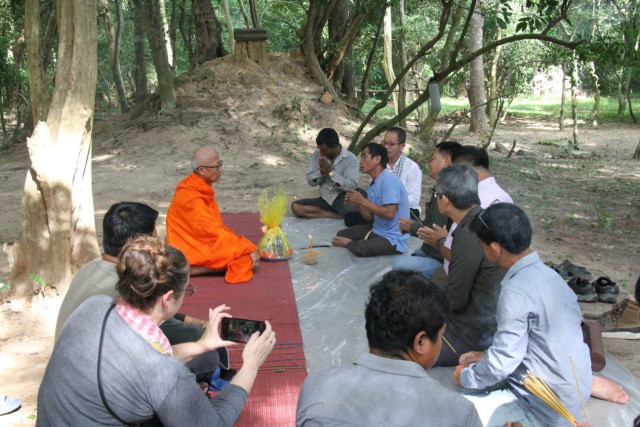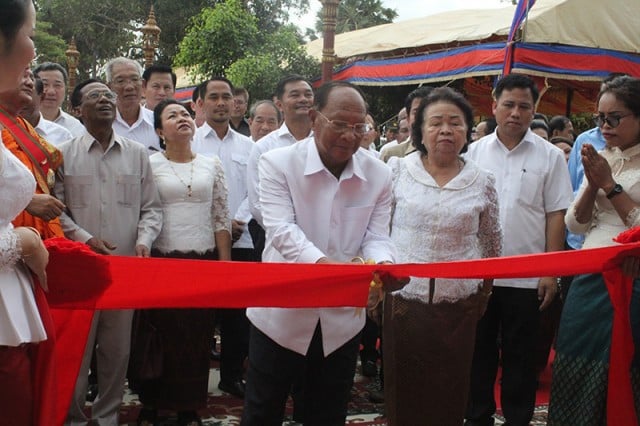Archeologists Dig near Angkor Wat to Study the Kingdom’s Changes of Religion

- By Thorng Broney
- July 16, 2023 7:21 PM
SIEM REAP — Researchers from the APSARA National Authority and U.S. universities have been excavating a site on the grounds of the Angkor Wat monument to learn about life at Angkor and other significant changes during the periods of changes of religion, and the relocation of the city from Angkor to the south.
Heng Piphal, an archaeologist from the U.S. University of Hawaii and research project leader, explained that the excavation is based on the structure of an ancient temple. The boundary sheet style has made it possible to date the temple from the 14th through the 16th centuries, he said. The Theravada Buddhist temple was actually built on the site of a Brahman temple dedicated to the deity Vishnu, or Narayan, he added.
As previous research had shown, this area of Angkor Wat was a small town and the capital city of Angkor, which is why Cambodians, and especially the Siem Reap people, call it "Angkor Toch." The town has hills, ponds, and a complicated road grid.
Based on the grid of this city, the temple was built on a hill that had been inhabited since the 12th century. Therefore, multi-institutional researchers have wanted to know what evidence this populated site may have left regarding the conversion of religion from Hinduism and Mahayana Buddhism to Theravada Buddhism, which Cambodians have been practicing since the late Angkorian era.
“According to research, this ancient temple of Theravada Buddhism was abandoned for a long time, damaging all the structures and covering almost all under the ground, and so it is unknown whether this temple was built from what,” Piphal said. “What does it look like? What objects were inside this location.”
Researchers have collected charcoal and other samples from the bottom of the pit for analysis and to determine when the temple was built on this hill.
They have identified traces of two ancient Theravada Buddhist temples on the grounds of Angkor Wat, one in the southwest and the other in the northwest, which have a canopy that covers the statue of the Buddha.
Originally written in Khmer for ThmeyThmey, this story was translated by Te Chhaysinh for Cambodianess.















